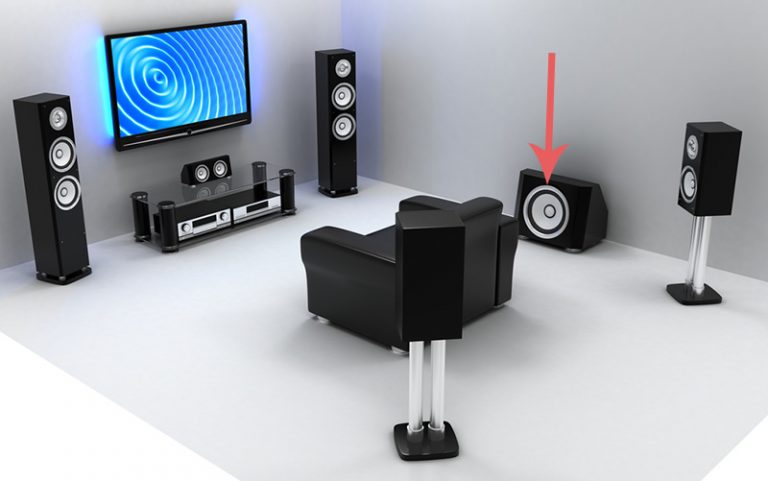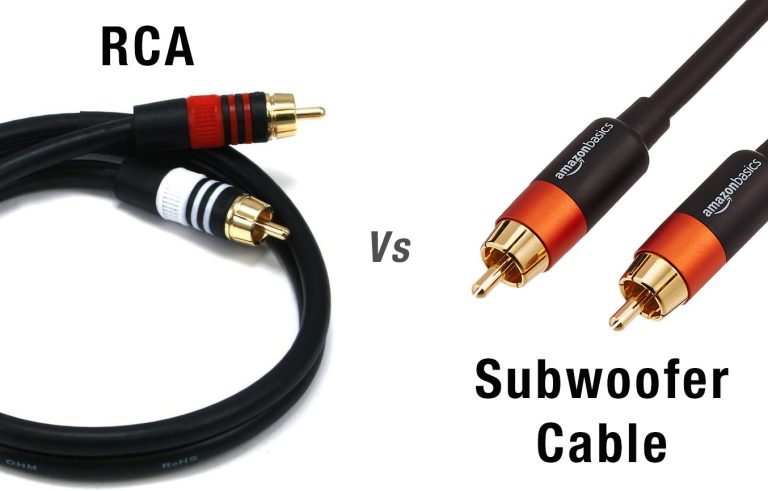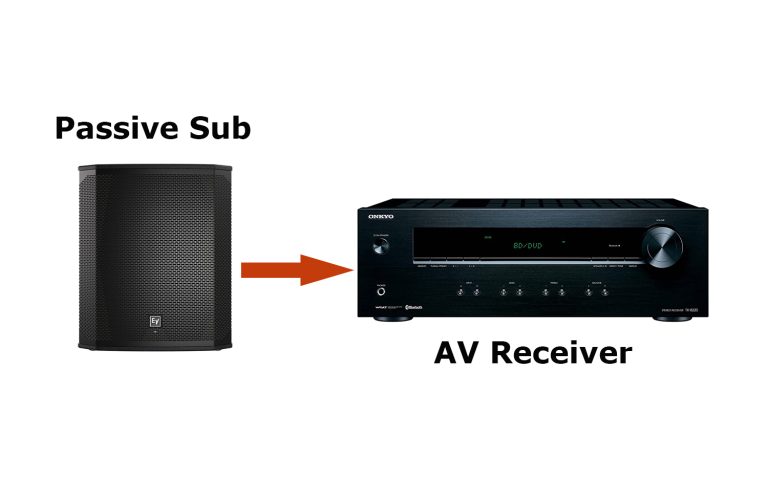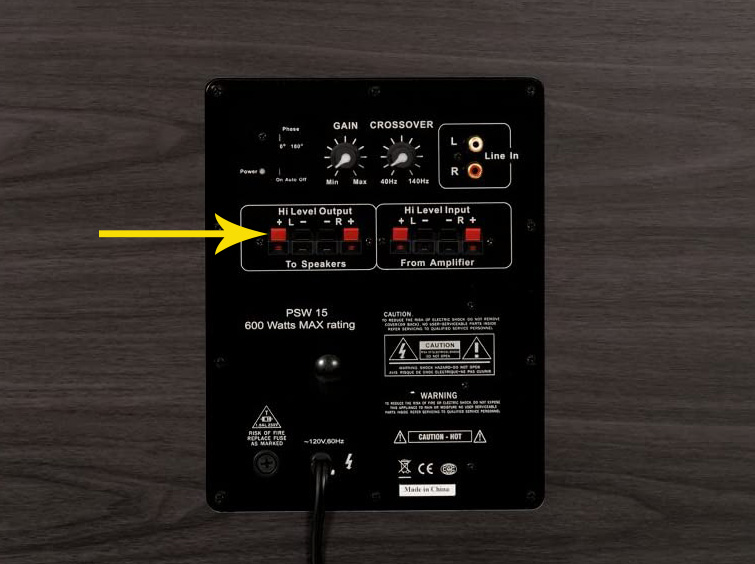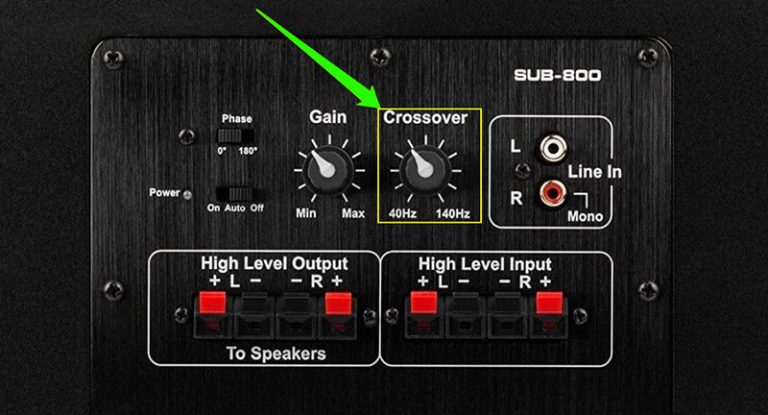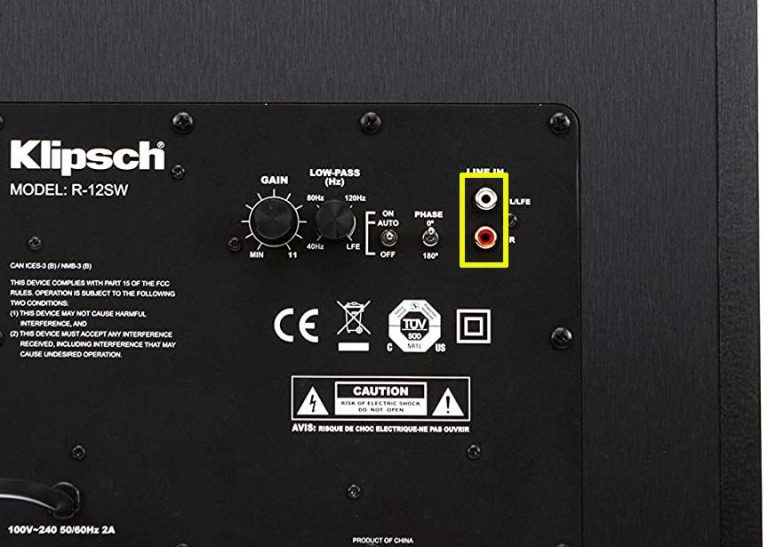Best Subwoofer Placement Options for Home Theater
A subwoofer is a nifty device that can enhance the lowest of sound frequencies. However, it won’t work that well if it’s not set up in the best location possible.
The best placement for a subwoofer is somewhere in front of your speakers. A single sub can be placed on the front corner of the room. Two subs will work well in front of the room or diagonally opposite each other. For four subwoofers, place them on each corner or on the center of each wall.
Now that you know where to place your subwoofers, it’s time to get rearranging! Read on below to learn more on how to achieve such placements.
Also read: Subwoofers on Floor vs Shelf – Which is the Better Option?
Best Subwoofer Placement Options for a Single Subwoofer
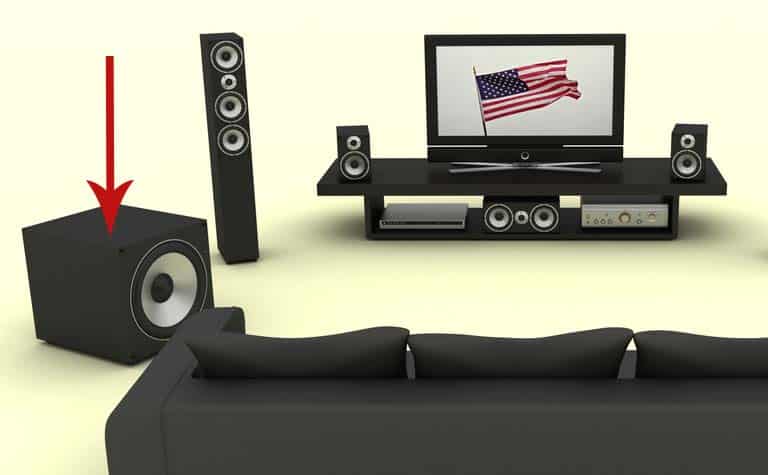
Two is always better than one. But even if you only have a single subwoofer, you can make it sound amazing.
Just think of this: a large single subwoofer will always sound better than two small ones.
The key to achieving great bass sounds, is of course, to pick the best location in your room. If you fail to do so, you’ll just end up with an unbalanced mix of sounds.
Who likes listening to some muted notes and a few boosted ones? I know I don’t. That’s why I recommend you follow these two placements:
1. Front Corner of the Room
To start, you should try placing it in the front of the room – by one of the corners.
Which side, you ask? Any location would do, as long as your sub is placed in front of your speakers.
Don’t put your sub directly against the wall, though. This will result in a harsh or rumbling sound.
While lower-quality subs will need to be as near the corner as possible, it’s good to leave a few inches in between the wall and the sub. A distance of 6-12 in (15.24-30.48 cm) from the wall should allow ample outflow.
By doing this, you can prevent your sub from sounding too boomy. When this happens, you won’t be able to distinguish which frequency is which.
So why is this position favorable for your single subwoofer? For one, it’ll help improve your sub’s output, thus making it sound louder.
Additionally, it can place more impact on the bass sounds.
It’s not enough to place your subwoofer on the front corner though. It would help to use your device’s software to improve the bass response. This program will help you reduce the too-high peaks from your tunes.
2. Any Area in the Room (Subject to a ‘Crawl’)
Yes, the front corner is a good place for your subwoofer/ However, you may have issues with placement. It might be the layout or the wires that could cause your trip.
No matter what your reason might be, you can find another location by doing any of these crawls:
Subwoofer Crawl #1
You can try to put the subwoofer in the place where you think it’ll fit best.
Of course, don’t forget to test the placement by playing a bass tune with varying frequencies. If you’re not happy with the sound, move the sub to the side in one-foot increments.
If you’re not satisfied with the bass, move your sub back to the corner. Test the sounds as you move every foot along the sidewall.
You know you’ve found the perfect location once you hear a full, blended sound.
Subwoofer Crawl #2
Moving your sub to test for placement entails a lot of work. That said, you can ‘hijack’ this hack by doing the crawl yourself.
While it’ll take you quite some time, it can give you the best placement with the help of some trial and error.
To do this, follow the steps below:
- Place your sub in the area where you often listen to tunes. Remember to level the sub to your ear height. For best results, place it on the chair that you use when you rock out in the room.
- Play some music. The deeper the base is, the better.
- ‘Crawl’ around the sides of your room. It’s easier to move your body than move the subwoofer little by little. Maintain your head on the same level of your subwoofer.
- Pinpoint the place where you hear a full and balanced bass sound. This is the location where you should put your single subwoofer!
Best Subwoofer Placement for Two Subwoofers

Although two subs mean double the price, they do come with more benefits as well.
With the right placement (the likes of which I’ll discuss below,) you can minimize the ‘standing wave’ effect. This happens when bass sounds get too quiet or too loud.
Since the subs are almost always placed on opposite sides, they can help balance the dips and peaks in the sounds.
Having two subs equate to lesser strain as well. Since two devices are playing, there’s no need for one to sound louder than the other.
The effect? More dynamic bass sounds, since no one sub needs to outperform the other.
To take advantage of this audio experience, however, you’ll need to find the right placement. Here are two prime examples:
1. Diagonally Opposite to Each Other
This is the best option for two subwoofers since it takes advantage of the resonance. This deep, full sound quality is made possible by the layout of the room.
To get the most out of this placement, it’s best to follow these tips:
- Use a sub that can adjust phasing.
- Install a home theater receiver that can adjust sub distances independently.
- Place your seats on the back corners of the room – this should help avoid phase alignment problems.
2. Front of the Room
As with a single subwoofer, two subs will sound well if placed in front of the room.
If you want to get the best position possible, you can do any of the crawls that I have mentioned above.
When it comes to testing, play one sub first before playing the other one. Finally, turn them on at the same time.
If you don’t have the time to do a crawl, you should consider trying any of these placements:
- Put one sub on every front corner (left and right).
- Fix one sub near the front corner, and the other at least a foot away from the other corner.
Best Placement Options for Four Subwoofers
You can never have too much of a good thing – subwoofers included. With four of these bad boys, you can enjoy bass sounds similar to that of a Dolby surround theater.
Four subwoofers do bass so well that you won’t even realize that a sub-calibration is taking place!
A report has also shown that four subs can provide the smoothest bass sounds in the room.
That said, here’s how to get the best audio experience from your sound quad:
1. Each Wall Center
The best way to arrange your four subs is to place one on each side of the room. Place each on the center for an equal bass response. This approach is not the most practical but it’s your best bet for enjoying the most even bass response in your living room or movie cave.
2. Each Corner
If the room layout prohibits you from placing your subs on the center of each wall, the next best thing to do is to place each sub on every corner.
While it’s not as good as the previous placement, it can still provide an impactful bass experience.
Remember: No matter what layout you pursue, make sure to use a receiver or processor. This will help you calibrate the two subwoofer pairs for the optimum sound experience.
The 3 Cs of Setting Up Your Subwoofer
Apart from the right placement, these 3 Cs should help you achieve a more immersive listening experience.
NB: They’re actually five, but I have already discussed the two – ‘Crawl’ and ‘Combination’ (multiple subs instead of one) above.
Connection
Connections matter. With the wrong wires here and there, you won’t get the bass sounds your subs have promised.
That said, it’s very easy to connect your sub. Just attach an audio cable to the output and input jacks.
If your sub has an LFE input, you can connect the cable to this jack. If you have stereo line levels, connecting the cable to the left or right side would be okay.
Subwoofer Without an Output
If you’re working with a sub that’s devoid of an output plug, you can use a spare set of speaker cables. All you need to do is run them from the receiver to the sub, and from the sub to the speakers. It’s a straightforward connection if you have the right set of speaker cables.
Subwoofer With Computer Speakers
You can use an output line – or any number of them – to connect your sub. But if your devices don’t have one, you can use a Y-adapter to connect the audio output.
Remember to affix the other end to the line input with the help of an 3.5 mm (0.14 in)-to-RCA cable.
Humming
The wrong connection can lead to a hum problem. This 60 Hz sound occurs when you plug the sub to an outlet different from the home theater.
Obviously, your first tendency should be to plug the sub to the same home theater outlet. If this doesn’t remove the humming, go check the cable to see if it needs to be replaced.
Old, damaged ones are no longer reliable, so it’s best to use a new connection instead.
Controls
If you’re using a low-cost sub, there’s nothing much you could do about the controls. You can either change the volume and crossover frequency – that’s pretty much it.
That said, you can still enjoy a great experience by manipulating the latter’s knobs accordingly. For example, if your speaker works best with a frequency of 64 Hz to 30 kHz, keep the frequency within that range.
If your speakers have no clear desired frequency, then it’s time for you to play with the controls. Should you hear a ‘hole,’ that means you should set your frequency higher.
Subwoofer With Home Theater Receiver
For this device, it’s best to turn the sub to the maximum frequency.
To start, follow the steps below:
- Set your small speakers’ frequency to 120 Hz. If you have lower ones, a frequency of 60 Hz would do. Doing this will help your speakers produce clearer sounds. That’s because they don’t have to deal with lower frequencies.
- Once you set your speakers’ frequencies, put your sub volume halfway up.
- If you have a sub with phase control, tinker with it as well. This should help blend the bass better with your speakers.
Tip: if your sub has auto-correction technology, don’t be afraid to make use of it! This will save you the time and energy of balancing the sounds of your home theater system.
Check
While it’s important to set the manufacturer’s prescribed frequency or volume, the bottomline here’s you need to play it by ear. Yes, that’s literal advice.
If you prefer this sound or that, no one can tell you otherwise.
For all intents and purposes, however, you know you’ve hit the sweet spot if:
- The female voices don’t sound bloated.
- The males shouldn’t have too much boom in their voices.
- There’s a surprising impact on your seat during explosions.
- There’s no ‘big boom’ when lighter music is playing (as is the case with jazz or pop).
That said, there’s no stopping you from achieving calculated bass perfection. To do this, you could use a measurement microphone such as the Dayton Audio Microphone (available on Amazon.com). This will help you measure the acoustics of your room accurately. This product is also made from high quality components and includes its own calibration response graph.
If you find this device rather expensive, you can go low-tech and download a real-time analyzer app instead. This program will show the ‘smoothness’ of the base response in your room. Add to that, it can tell how the subs match with your speakers.
For best results, download an app that has an ⅙ octave resolution.
Final Thoughts
The best subwoofer placement depends on the type. The front of the room is ideal for single and dual subwoofers. The latter will benefit from a diagonally opposite layout as well.
As for four subs, the best bass sounds result from placing them on each corner – or on each wall center.
